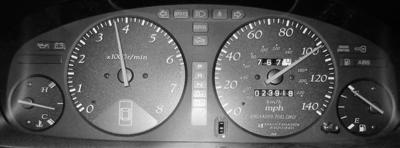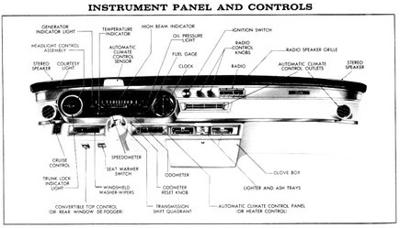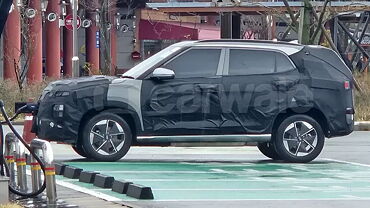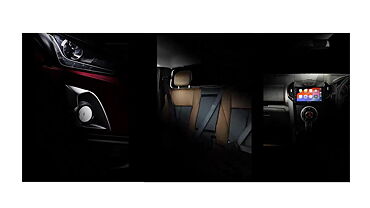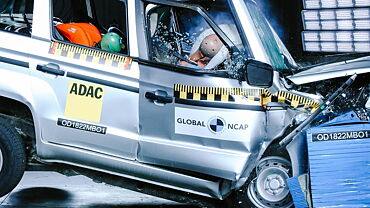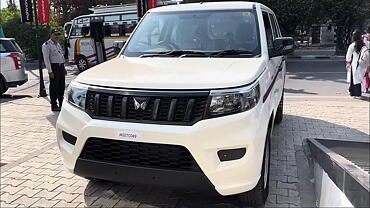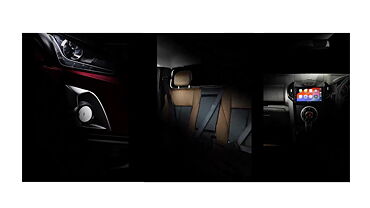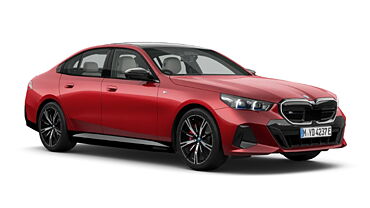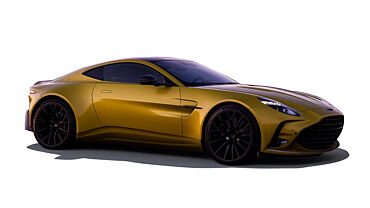Over the last weeks, we have explored various systems in cars, such as transmissions, suspensions and wheels. Today, we end the series with a review of the final major system in a car, the electronics.
Every automobile is equipped with a number of electrical instruments and accessories. The numbers and types of these systems and components vary significantly from model to model and year to year. In this two part article we will cover brief information on common instruments, gauges, lights, warning indicators, etc.
Let’s start with the beginning – the car battery. The battery is what provides power to all the electronic wizardry to function.
Battery
An automotive battery is an electro-chemical device that provides for and stores electrical energy. It has three main functions to perform:
1. To provide voltage and serve as a source of current for the electronic devices in the car
2. Act as a voltage stabilizer for the entire electrical system of vehicle
3. Provide current whenever the electrical demands exceed the output of charging system.
A conventional battery consists of grids, positive plates, negative plates, separators, elements, electrolyte, a container, cell covers, vent plugs and cell containers. Maintenance free batteries do not have removable cell covers or caps, but they do have gas vents. Sealed maintenance free batteries do not require gas vents used on other maintenance free designs.
The subject on battery itself is vast and will be covered separately. In this article, we limit ourselves to the usage of instruments and accessories.
Instrument Panels
In horse and wagon days, the dashboard was a vertical board placed in front of driver to protect him from mud from the horse’s hooves just ahead. Today’s car dashboard is rather an instrument panel. It mounts an array of electrical gauges, switches and controls all connected to mazes of wiring, printed circuitry, and air hoses beneath stylishly finished sheet of plastic or metal.
There are various instrument designs and layouts. The two basic types of instrument panel display are analog and digital. In traditional analog display, an indicator moves in front of fixed scale to give readout. The indicator is often a needle, but it can also be liquid crystal or graphic display. A digital display uses numbers instead of needle or graphic symbol. The advantage of analog display is that they show relative change better than digital display. Analog displays are useful when the driver must see something quickly and exact reading is not important. For example, an analog tachometer shows the rise and fall the engine speed more clearly, which is better for shifting the gear than a digital display. The driver does not need to know exactly how many rpm the engine is running. The most important thing is how fast the engine is reaching the red line on gauge.
A digital display is better for showing exact data such as miles or operating hours. Many speedometer combinations available are with combinations of analog and digital.
Digtal Electronic Display
There are three types of digital electronic display used today.
-
Light Emitting Diode - LED
A combination of small lights, LED lighting systems are used as either signal indicator lights or they can be grouped to show a set of letters or numbers.
-
Liquid Crystal Display - LCD
LCD screens are made of sandwiches of special glass and liquid. A separate source of light is required to make display work. When there is no voltage, light cannot pass through the fluid. When voltage is applied, voltage pass through the segment. LCDs do not like cold temperatures, and the action of display slows down in cold weather. These displays are also very delicate and must be handled with care. Any rough handling of display can damage it.
-
Vacuum Fluorescent
These display use glass tube filled with argon or neon gas. The segment of display are little fluorescent lights, like the ones in fluorescent fixture. When current is passed through the tubes, they glow very brightly. These displays are both durable and bright.
The choice of either an analog or digital display is a matter of designer or buyer preferences.
Basic Information Gauges
The following gauges are found on almost every instrument panel, whether analog or digital. The detailed operation of some of these gauges is described below.
Speedometer
Electric speedometers are used in more and more cars. While there are several systems in use, the most common types receive their speed information from the transmission mounted vehicle speed sensor. This speed signal is used by other modules in the vehicle, including speed control, ride control module, the engine control module, and other s.
Odometer
The odometer is a digital gauge that is usually driven by a spiral gear cut on the speedometer’s magnet shaft. The odometer’s numbered drums are geared so that when any one drum finishes a complete revolution, the next drum to the left is turned one tenth of a revolution.
Like mechanical speedometer, the conventional odometer is giving way to electrically driven and electronic types. Generally the odometer receives its information from the vehicle speed sensor. Odometer displays seven digits, with last digit in tenths of a unit. The accumulated value of digital display odometer is stored in nonvolatile memory that retains the mileage value even if battery is disconnected.
Oil Pressure gauge
This gauge indicates engine oil pressure. The oil pressure typically should be between 45 and 70Psi. A lower pressure is normal at low idle speed.
The oil pressure determines whether or not current flows through the oil pressure gauge winding. With low oil pressure (or with engine shut off), the oil pressure switch is open and no current flows through the gauge winding. The needle points to L. With oil pressure above a specific limit, the switch closes and current flows through the gauge winding to ground. A resistor limits current flow through the winding and ensures that the needle points to about mid-scale with normal oil pressure.
Coolant temperature gauge
This gauge indicates engine coolant temperature. It should normally indicate between 76 to 90 degree centigrade. Somewhat higher temperature might occur under certain conditions. Typically maximum allowable temperature is 99 degree centigrade.
The sensor is usually a thermally sensitive resister. It determines the current flow through the temperature gauge winding. With low coolant temperature, the sensor resistance is high and current is low. The needle points to C. As coolant temperature increases, sensor resistance decreases and current flow increases. The needle moves towards H.
The temperature gauge in a digital panel is of the bar type with a set number of segments. The number of illuminated bars varies according to voltage according to voltage across the sensor. With low coolant temperature, sensor resistance is high and few segments are turned ON. As coolant temperature increases, sensor resistance decreases and the number of illuminated segments increases.
Fuel level gauge
This gauge indicates the fuel level in the fuel tank. It is a magnetic indicating system that can be found on either an analog meter or digital bars in instrument panel.
The fuel gauge unit is on the top portion of fuel tank, and consists of a variable resistor controlled by the level of an attached float in the fuel tank. When fuel level is low, resistance in the unit is low and movement of gauge indicator dial is minimal (for empty position). When the fuel level is high, the resistance in unit is high and movement of gauge indicator is greater
In some fuel gauge systems, a low fuel warning is used to reduce fuel gauge needle fluctuation caused by fuel motion in the tank and provide a low fuel warning when fuel reaches minimum level as designed.
Tachometer
The tachometer indicates engine rpm (engine speed). The electrical pulses to the tachometer typically come from ignition module or PCM. The tachometer using a balanced coil gauge, converts these pulses to rpm that can be read. The faster the engine rotates, greater the number of pulses from coil. Consequently greater is the indicated rpm.
Charging system gauge
This gauge allows driver to monitor the charging system. While a few cars use voltmeter, most of charging systems use either an ammeter gauge or an indicator light.
Indicator and warning devices
Indicator lights and warning devices are generally activated by closing of a switch. With power from fuse panel on other side, the indicator light comes on to warn the driver that something in the system is not functioning properly or that a situation exists that must be corrected. Some of the common warning lights are given here.
Airbag readiness light
On vehicles equipped with airbag, the airbag readiness light lets the driver know the airbag system is working and ready to do its job. It lights briefly when ignition turned ON. A malfunction in airbag system causes light to stay on continuously or to flash, or else the light may not come ON at all.
Air suspension light
Voltage is present at the air suspension indicator at all times. If an air suspension fault is present, the indicator illuminates.
Fasten belts indicator
When ignition is turned to start or run, the warning module applies voltage to illuminate the fasten belt indicator for few seconds.
High beam light
With headlight turned on and main light switch dimmer in high beam position, the indicator illuminates.
Left and Right turn indicators
With multi function switch in left or right turn position, voltage is applied to circuit to illuminate the left or right turn indicator. The turn indicator flashes in the unison with the exterior turn signal bulbs.
Antilock light
If an antilock brake system fault is present , antilock brake module grounds the indicator circuit and antilock light goes ON.
Retractable headlight
This indicator light turns on only when the headlight rise or lower motor is in operation. It comes on and lights for about one second when headlight moves up or down.
Oil temperature warning light
If the temperature of oil exceeds a specified temperature, the warning light at oil temperature gauge illuminates and warns driver of high oil temperature. In such cases driver need not stop car immediately but can run till it can be parked safely for some time.
Oil pressure indicator light
The indicator is operated by an oil pressure switch located in the engine’s lubrication system.
Stop light warning light
This warning light remains lighted as long as brake pedal is depressed
Brake warning light
When this light is lit, it is indication that parking light is engaged
Low fuel warning light
When fuel level falls below specified level, an electronic switch in module closes and power is applied to illuminate low fuel indicator light.
Check engine warning light
This warning is provided for the purpose of indication of vehicle’s engine and its systems. If there is a fault in the system, warning light comes on while engine is running. Check engine lights may be triggered by oil pressure, coolant temperature, or by engine computer that monitors several engine systems and illuminate warning light whenever it senses a fault.
Door lock indicator light
This indicates if door locks are engaged or not.
Door ajar warning light
When ignition is turned on and if door left open or are ajar, this light comes on.
Defrost indicator light
When defroster is operating, this light will be on
Drive indicator light
Some front wheel/four wheel drive vehicles have a light, when it is lit, indicates that vehicle is in four wheel drive mode of operation.
Warning devices Sound
Various types of tone generators, including buzzers, chimes, and voice synthesizers are used to remind driver of number of vehicle condition. These warnings can include fasten seat belts, air bag operational, key left in ignition, door ajar, and lights left on
Driver information centers
The various gauges, warning devices, and comfort controls may be grouped tighter in to a driver information center or instrument cluster. This information center may be simple or it may be an all-encompassing cluster of information. The purpose of this message center is to keep driver alert to the information provided by the system. The type and extent of information may vary from one system to other.
Steering wheel touch controls
Steering wheel touch controls are standard on many vehicles. Four or six large buttons are located conveniently in the steering wheel, providing control over the more frequently used radio and heating/air conditioning functions. This provided driver with finger tip controls where they are easy to use.
Conclusion
Electronic systems of the car are generally taken for granted but they are integral in providing us a pleasurable and safe drive. The above is an attempt to provide an overview of such systems in cars.
Apart from the electrical instruments mentioned above, there are many electrical accessories that make driving safer, easier, and more pleasant including windshield wipers/washers, power door locks, power trunk release, illuminated entry systems, keyless entry door locks, power windows, power seats, power mirrors, rear window defrosters and heated mirrors, moon or sun roof system, radios, horns, clocks, cigarette lighters, cruise controls, and engine cooling fans.
We will examine these other features in a subsequent article.



